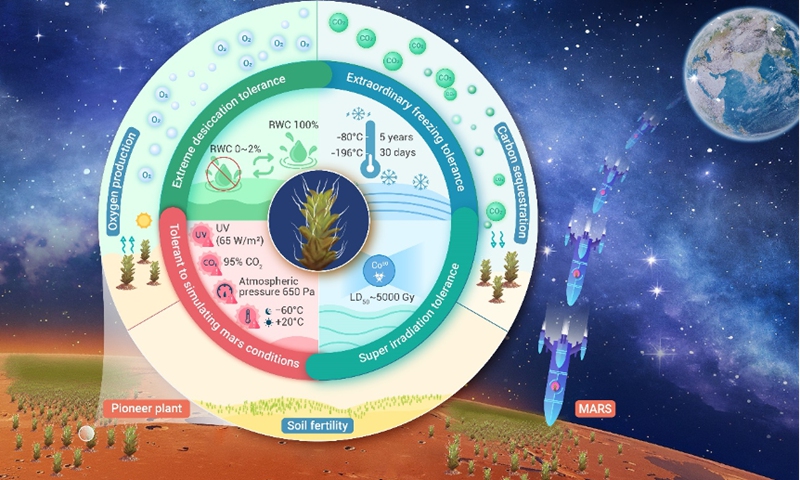
Photo: Courtesy of Xinjiang Institute of Ecology and Geography, Chinese Academy of Sciences
In an exciting discovery, researchers from the Chinese Academy of Sciences’ Xinjiang Institute of Ecology and Geology have discovered a species of desert algae called Syntrichia caninervis capable of surviving the extreme conditions on Mars.
During the third Xinjiang scientific mission, the research team focused on studying desert algae and not only challenged people’s understanding of the species’ endurance in extreme environments, but also demonstrated their ability to survive, the Global Times has learned. Regenerate under simulated Martian conditions.
Supported by the Xinjiang Science Research Project, researchers Li Xiaoshuang, Zhang Dayuan, and Zhang Yuanming from the Xinjiang Institute of Ecology and Geography, and Guang Dingyun, an academician from the Chinese Academy of Sciences, focused on studying „precursor species” in Syndrichia. Extreme desert environment, according to the Xinjiang Institute of Ecology and Geography in an article sent to the Global Times on Sunday.
Through scientific experiments, they have systematically demonstrated that algae can tolerate cell dehydration of more than 98 percent, survive temperatures as low as -196 C, withstand 5000Gy of gamma radiation undisturbed, and rapidly recover, turn green, and resume growth. Exhibits extraordinary resilience.
These discoveries push the boundaries of human knowledge on the endurance of organisms in extreme environments.
Furthermore, the research revealed that under simulated Martian conditions with multiple adversities, Syntrichia caninervis could still survive and reproduce upon return to suitable conditions. This represents the first report of higher plants surviving under simulated conditions on Mars.
The research team also identified unique characteristics of Syntrichia caninervis. Its overlapping leaves reduce water evaporation, while the white tips of the leaves reflect intense sunlight. In addition, the white tips’ innovative „top-down” water absorption system efficiently collects and transports water from the atmosphere. Also, in adverse environments the alga enters a selective metabolic dormancy and can quickly provide the energy needed for recovery once its surrounding environment improves.
Based on the extreme environmental tolerance of Syntrichia caninervis, the research team plans to conduct experiments on the spacecraft to monitor the survival response and adaptation capabilities of the organisms under microgravity and various ionizing radiation adversities. They aim to unravel the physiological and molecular basis of the alga and explore key life tolerance regulatory mechanisms, laying the foundation for future applications of Syntrichia caninervis in space colonization.

„Oddany rozwiązywacz problemów. Przyjazny hipsterom praktykant bekonu. Miłośnik kawy. Nieuleczalny introwertyk. Student.
